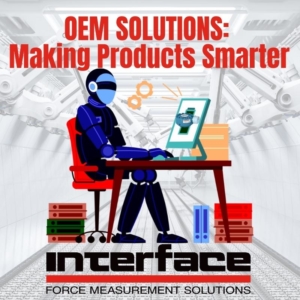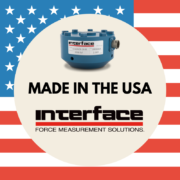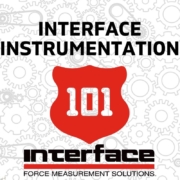Making Products Smarter with Interface OEM Solutions
 Products need to be smart in today’s world. Whether it is consumer or commercial, people expect added functionality in everything. From coffeemakers and exercise equipment to large industrial machinery used in massive infrastructure projects, sensors play a crucial part in making these products smarter.
Products need to be smart in today’s world. Whether it is consumer or commercial, people expect added functionality in everything. From coffeemakers and exercise equipment to large industrial machinery used in massive infrastructure projects, sensors play a crucial part in making these products smarter.
Sensor technologies allow smart products to collect and manage important user data, monitor products usage for durability and safety, enable automation, and personalize user applications and experiences. Original equipment manufacturers of these smart products and their components are eager to find quality sensors that provide robust features ideal for modern day user requirements.
Force sensors are key to making products smarter, performing with greater accuracy, and enhancing overall quality. Force sensors have the unique ability to perform multiple tasks at a time, including real-time monitoring and executing automation features with precision.
Interface partners with engineers and product designers to offer OEM solutions intended to be directly implanted into a product, or retroactively installed to make products smarter. With our unique assortment of custom and off-the-shelf load cells, torque transducers and instrumentation options, including wireless components, our force sensors are created to help enhance the smart products of today and tomorrow.
Interface’s white paper Turning an Active Component Into a Sensor details of how Interface works with OEMs to design sensors into products or retrofit them into existing products. To further illustrate the range of options available with Interface’s sensors and instrumentation, we have detailed additional application notes to give you a broader perspective of utilizing force sensors for OEM solutions.
 Robotic Surgery Arm
Robotic Surgery Arm
A biomechanical medical company wanted to gather force, torque, and tactile feedback from their robotic arm during invasive surgery. The surgeon’s movements are mirrored by the robotic arm during surgery, and it is essential all haptic force feedback is measured to ensure safety during invasive surgery. Several of Interface’s force and torque measurement products were used in this OEM robotic arm. These include the ConvexBT Load Button Load Cell, SMTM Micro S-Type Load Cell, and the MRTP Miniature Overload Protected Flange Style Reaction Torque Transducer. Force results were collected when connected to the 9330 Battery Powered High Speed Data Logging Indicator and viewed via a laptop. Each one of Interface’s load cells and torque transducers played a part in the ensuring the safety and functionality of robotic arms during invasive surgery. The force feedback that was measured from the robotic arm ensured that the robot used the perfect amount of force when using surgical tools that create incisions during surgeries. It also measured the torque being produced, ensuring the robot arm was moving smoothly and at the right speeds.
PRV (Pressure Relief Valve) System
A manufacturer wanted to conduct a PRV test (pressure relief valve test) on their valve installation and monitory equipment when under a full pressure load. The purpose was to ensure safety and reliability for customers while the product was in use. They also wanted to be able to record and graph the results. As part of an OEM system that is used by their customers, Interface suggested installing the 1200 Standard Precision LowProfile™ Load Cell to a test frame on top of the pressure relief valve. As pressure is increased onto the spring in the valve, it pushes forces onto the load cell. Results can be recorded using the 9330 Battery Powered High Speed Data Logging Indicator. Using this solution, the manufacturer’s customers are able to successfully determine the exact amount of force it requires for their valve to release when under a pressure load, increasing longevity and safety of the product overall.
 Bolt Tension Monitoring
Bolt Tension Monitoring
A customer wanted to monitor the tension of the bolts used in installation of industrial pipes. Interface suggested installing multiple LWCF Clamping Force Load Cells, each connected to WTS-AM-1E Wireless Strain Bridge Transmitter Modules. The load cells are installed under the tightened bolts on the pipes as part of the technology solution to measure forces. The load cells measure the compression forces from the bolts, and the real-time results are transmitted wirelessly from the WTS-AM-1E’s to the WTS-BS-6 Wireless Telemetry Dongle Base Station. Real-time results from the LWCF’s are displayed using provided Log100 Software. Interface’s load cell monitoring system successfully monitors the compression forces of the bolts in real-time, which is an important installation solution for the OEM.
Smarter products, connected factories, and higher efficiency are all made possible through sensors. Interface force sensors are the leading solutions for enabling automation, real-time monitoring and accurate data collection for OEM applications.
Interface force sensors make consumer and commercial products smarter. Learn why OEMs choose Interface to activate products with sensor technologies and more about Interface’s capabilities and solutions for OEMs here.
ADDITIONAL RESOURCES
Interface OEM Solutions Process
OEM: Candy Stamp Force Testing
OEM: Prosthetic Foot Performance
OEM: Snack Weighing and Packaging Machine
OEM: Tablet Forming Machine Optimization
Contact our OEM specialists and let us help you to make your products smarter and more equipped to meet the demands of tech-savvy users.








